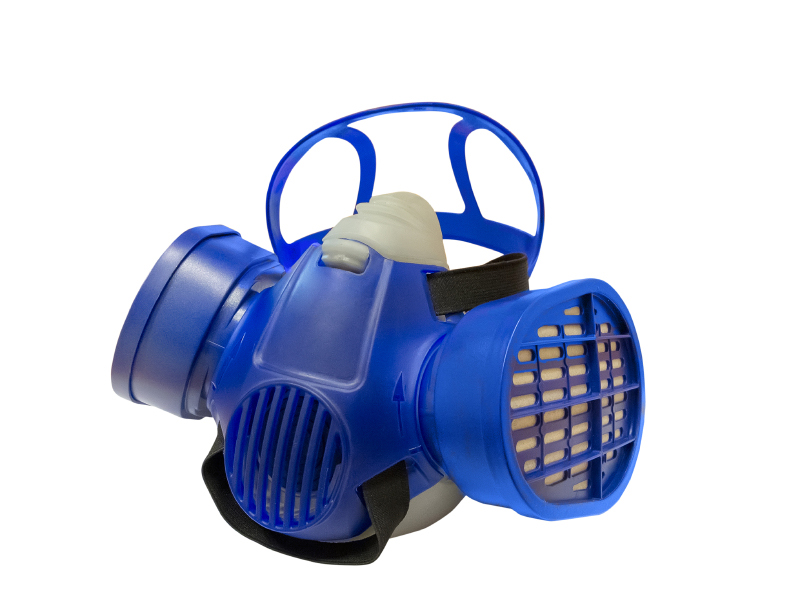To protect workers from harmful exposures to air contaminants, you have to be able to calculate exposure limits accurately. Here is a review of the formulas used to calculate PELs.
OSHA has developed 470 PELs (permissible exposure limits) for various forms of approximately 300 chemical substances. The PELs provide numeric standards that determine how long a worker may be exposed in the workplace to a threshold amount of an airborne contaminant without adverse effects on health.
 |
Most PELs are for air contaminants that may be inhaled by workers or absorbed through the skin. An additional group of PELs were developed for cancer-causing substances.
How to Caculate PELs
Because there are many types of materials with different degrees of hazards, OSHA’s air contaminants standard (29 CFR 1910.1000) includes the three PEL tables, Table Z-1 (limits for air contaminants), Table Z-2 (limits for substances with ceiling values), and Table Z-3 (mineral dusts). Which table you follow depends on the particular contaminant involved and when, how, and where it’s used.
Computing Exposure
In order to determine whether an employee is exposed above the regulatory limit for an air contaminant that does not have a ceiling value, use the following formula and Table Z-1 to determine the exposure for an 8-hour work shift:
E = (CaTa + CbTb + … CnTn) / 8
In this formula:
“E” is the equivalent exposure for the work shift.
“C” is the concentration during any period of time, “T,” where the concentration remains constant.
“T” is the duration, in hours, of the exposure at the concentration “C.”
The value of “E” must not exceed the 8-hour time-weighted average (TWA) specified in the Z tables for the material involved.
Example: Assume that Substance A has an 8-hour TWA limit of 100 ppm in Table Z-1. Assume the employee has the following exposure to the substance:
2 hours at 150 ppm
2 hours at 75 ppm
4 hours at 50 ppm
The formula to determine exposure would be as follows:
(2 x 150 + 2 x 75 + 4 x 50) / 8 = 81.25 ppm
Since 81.25 ppm is less than 100 ppm, the 8-hour TWA exposure is acceptable.
Computing Exposure to a Mixture of Substances
The following formula must be used to determine the equivalent 8-hour TWA exposure limit for a mixture of air contaminants:
Em = (C1/L1 + C2/L2 +…Cn/Ln)
In this formula:
“Em” is the equivalent exposure for the mixture.
“C” is the concentration of a particular contaminant measured in the workplace.
“L” is the exposure limit for the particular contaminant found in the Z tables.
The value of E must not exceed 1.0.
Example: Consider the following exposures:
Substance Concentration 8-hr TWA PEL
(ppm) (ppm)
A 500 1,000
B 45 200
C 40 200
The formula for determining mixtures of contaminants would be as follows:
(500/1,000 + 45/200 + 40/200) = 0.925
Since 0.925 is less than 1.0, the exposure to the mixture of contaminants is within acceptable limits.
Contaminants with Ceiling Values
In order to determine whether an employee is exposed above the regulatory limit for an air contaminant that has a ceiling value, use Table Z-2 to determine permissible exposure limit.
According to 1910.1000(b)(1), an employee’s exposure to any substance listed in Table Z-2, in any 8-hour work shift of a 40-hour workweek, shall not exceed the 8-hour time weighted average limit given for that substance in Table Z-2.
According to 1910.1000(b)(2), an employee’s exposure to a substance listed in Table Z-2 shall not exceed at any time during an 8-hour shift the acceptable ceiling concentration limit given for the substance in the table, except for a time period, and up to a concentration not exceeding the maximum duration and concentration allowed in the column under “acceptable maximum peak above the acceptable ceiling concentration for an 8-hour shift.”
Example: During an 8-hour work shift, an employee may be exposed to a concentration of Substance A (with a 10 ppm TWA, 25 ppm ceiling and 50 ppm peak) above 25 ppm (but never above 50 ppm) only for a maximum period of 10 minutes. Such exposure must be compensated by exposures to concentrations less than 10 ppm so that the cumulative exposure for the entire 8-hour work shift does not exceed a weighted average of 10 ppm.

PingBack from http://topsy.com/safetydailyadvisor.blr.com/archive/2010/10/20/chemical_safety_pel_calculations.aspx?utm_source=pingback&utm_campaign=L2